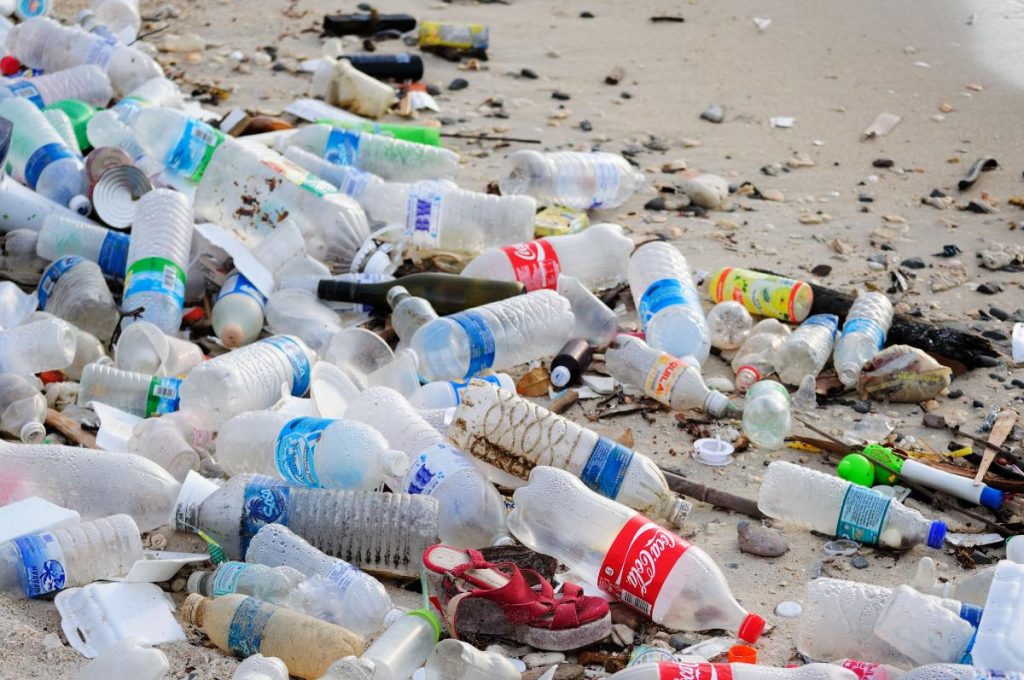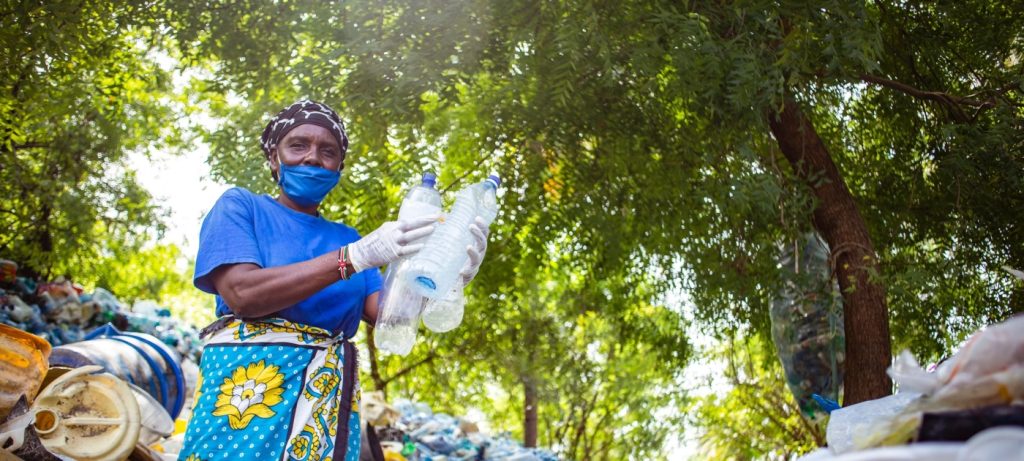Professor Joseph Legend Mfon was the keynote speaker of today’s World Environment Day organized by Environment Advocates of Nigeria with the theme Beat Plastic Pollution ‘Ecosystem Restoration”
In his address, Professor Joseph Legend noted that World Environment Day is celebrated on June 5 every year to remind people to save nature and the earth by stopping non-environmentally friendly activities.
The text of the speech is provided below.
He stated that; The United Nations Environment Program (UNEP) proposed a special day for the environment in 1972, which was designated by the UN General Assembly. This year, the theme of World Environment Day 2023 is "BeatPlasticPollution," highlighting people's actions toward plastic pollution reduction.
Plastics are made with as many as 13,000 chemicals, according to a UN report this month, and 3,200 of those have “hazardous properties” that could affect human health and the environment. Many more have never been assessed and may also be toxic, according to a report from Greenpeace released last week.
The scale of plastic pollution is growing, relentlessly. The global production of plastics has risen almost 200 times in seven decades—the average male life expectancy. It was two million tonnes in 1950 and, in 2021, it had risen to more than 390 mt. And more than half of the total plastics over this period was produced and marketed only since 2000. Bear in mind, these figures are plastics industry submissions. If one were to include synthetic fibres, the total plastic production would be much higher.

Of the plastics produced so far since 1950, almost two-thirds ended up in the environment, including in landfills, while only just over a quarter is still in use, as per one estimate. Recycling, the most effective plastic pollution solution, accounts for a mere 6-9% of the plastics produced so far.
The plastic pollution problem, though, is not merely one of waste, but also one of a massive carbon footprint—production and disposal of the material through incineration, the European Commission estimates, emits close to 400 million tonnes of carbon dioxide annually. For perspective, the annual energy savings from recycling all global plastic waste is pegged at an equivalent of 3.5 billion barrels of oil per year. With every year of our plastic addiction, the emission challenge will only worsen—the production, use and disposal of fossil-fuel-based plastics is forecast to reach 19% of the global carbon budget by 2040.
What is behind our addiction to plastics? There are, of course, many uses of the polymer and there is hardly any sector that is untouched by it. But, our problem largely is one of single-use plastics. Almost 50% of the plastics used can be clubbed under the head of packaging material; globally, the UNEP says, one million plastic bottles are purchased every minute while a whopping five trillion plastic bags are used every year. The use-and-throw nature of many classes of plastic products—which never degrade and are only capable of becoming ever smaller particles—explains why beating plastic pollution has been such an insurmountable challenge. And, single-use plastics have a rather heavy carbon footprint, with 98% of these being produced from “virgin” feedstock, that is, from fossil fuels and not plastics already produced.
Our agriculture is 4-23 times more likelier to be contaminated by microplastics than our oceans. Microplastics are entering our body through food, drinking water, through the air we breathe, and even our skin. They are being detected in our lungs, livers and other key organs. Such is the exposure that it is likely to become congenital—a study showed presence in the placenta. The health effects are yet unknown, but there is evidence of chemicals linked to plastics causing severe health concerns.
“Plastics have no place in a circular economy. It’s clear that the only real solution to ending plastic pollution is to massively reduce plastic production.”
The scale of plastic pollution is growing, relentlessly. The world is producing twice as much plastic waste as two decades ago, reaching 353 million tonnes in 2019, according to OECD figures.
The vast majority goes into landfills, gets incinerated or is “mismanaged”, meaning left as litter or not correctly disposed of. Just 9 percent of plastic waste is recycled.

The problem is massive, demoralizing, and ostensibly impossible to fix. But today the United Nations Environment Programme (UNEP) is dropping an urgent report on the extraordinary environmental and human costs of plastic pollution, along with a road map for the world to take action. With several strategies working in concert—like production cuts and more reuse of plastic products—the report finds that humanity might reduce that pollution 80 percent by 2040. The road map lands just weeks ahead of the second round of negotiations for an international treaty on plastics, which scientists and antipollution groups are hoping results in a significant cap on production.
The report emphasizes the devastating price of our civilization’s addiction to plastic, “particularly when it comes to human health costs of plastics—so endocrine disruption, cognitive impairments, cancers,” says Professor Joseph Legend Mfon.
Plastic is, at the end of the day, a highly toxic material that’s infiltrated every aspect of our daily lives. The goal above all others should be to stop manufacturing so much of the stuff, so the new road map calls for eliminating unnecessary plastics, like the single-use variety. But the challenge is that plastic remains absurdly cheap to produce—its many external costs be damned.
However, even recycling that’s done properly comes at a huge environmental cost: A study published earlier this month found that a single facility might emit 3 million pounds of microplastic a year in its wastewater, which flows into the environment. The upside, at least, is that the facility would have released 6.5 million pounds of microplastic had it not installed filters, so there’s at least a way to mitigate that pollution. But these tiny particles have now corrupted the entirety of the planet, including a broad range of organisms. And generally speaking, as plastics production is increasing exponentially, microplastic pollution is increasing in lockstep.
Another strategy highlighted is “extended producer responsibility,” in which manufacturers don’t just make the stuff and wipe their hands of it. The plastics industry has long promoted recycling (even though it has known that the current system doesn’t work) because it makes you, the “careless” consumer, responsible for pollution. Extended producer responsibility puts the burden back on the industry, forcing producers to, say, implement systems to take bottles back and reuse them.
Additionally, he noted that, countries might impose a tax on plastic, which would make it more expensive for manufacturers to churn out virgin plastic. Governments would then use that money to fund recycling programs and other mitigation measures to reduce plastic pollution. “The costs that are externalized to society are actually put up front,” says Prof. Joseph Legend Mfon. “And then recycled materials are much more competitive with the virgin materials. That will be a tremendous benefit for keeping plastics in play longer.”
Another way to keep plastics in circulation is to encourage reuse. So instead of having to recycle a single-use water bottle, ideally people would have their own reusable bottles to fill over and over. Instead of buying shampoo in a plastic bottle each time, people might visit refill stores. Combined, such reuse initiatives could reduce plastic pollution by 30 percent, the new report finds. “It does require systems and investment, but it has the potential to be a big economic opportunity,” says Prof. Joseph Legend Mfon.
Finally, the Professor Joseph Legend Mfon calls for a “careful replacement” of certain plastic products—using paper or compostable materials instead, for instance. “Careful” meaning we wouldn’t want to widely deploy some sort of plastic alternative that ends up being just as toxic. This is already a problem, as plastics producers swap out known toxic chemicals, like bisphenol A (aka BPA), for similar chemicals that may be just as toxic, if not more so—a “regrettable substitution,” as scientists call it.
The good news, at least, is that plastic pollution is finally being elevated to emergency status in the international community. “The fact that there is consensus that this is an issue by all countries, to me means we have a tremendous opportunity,” says Professor Joseph Legend Mfon. “It’s our job to get the science out there so that people can see the numbers and understand what the stakes are right now. Because plastics pollution is a time bomb, essentially, and we need to deal with it now.”
